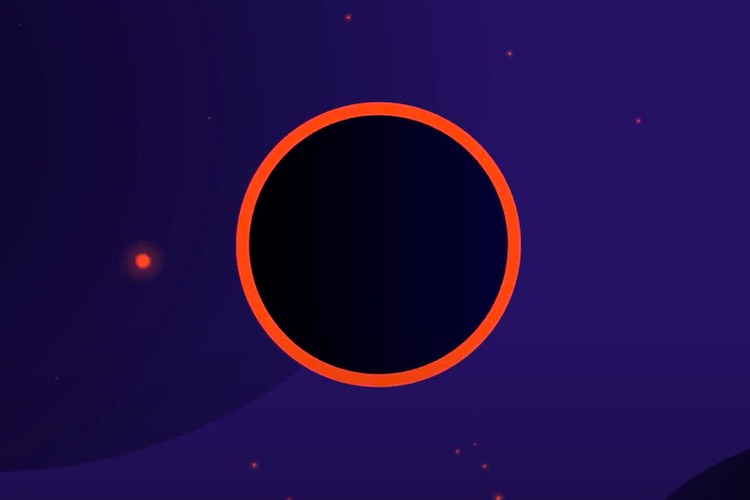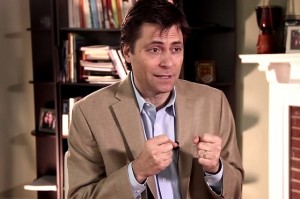Our Mathematical Universe
Physicist Max Tegmark on the Doppler effect, redshift, nuclear fusion, and what happened 13.8 billion years ag...

Published on June 14, 2015 in Cornell University Press, new study titled A model with no firewall gives a new look at Hawking`s paradox. We have asked the author of the research, Prof. Samir D. Mathur, to comment on this work.
In a recent paper I have presented a model which would resolve Hawking’s paradox of information loss in black holes, and also preserve the classical intuition that no ‘firewall’ is felt at the horizon. What is Hawking’s puzzle, and how is it solved?
Black holes form when matter shrinks under its own gravitational attraction. Beyond some density, this shrinking becomes a runaway process: the denser the matter gets, the more is the pull of gravity, untill all the mass of a star ends up in a point with infinite density. The black hole has a horizon — the boundary of the region from which even light cannot escape. For a black hole with mass equal to that of the Sun the radius of the horizon is about 3 km.
One can then ask: what happens if an object falls onto this surface? One possibility is, of course, that it gets destroyed, just like an object falling on the surface of the earth. But there is a second possibility: the fuzzball surface vibrates under the impact of the falling object, and these vibrations approximately mimic free infall through empty space. The reason such a mimicking is possible is that in quantum theory every system is described completely by a set of characteristic frequencies. If two systems have approximately same frequencies, then they will mimic each other.
In my paper I give a model where the black hole emits information through its radiation, and yet provides an experience of ‘approximate free fall’ through its horizon. We do not know if actual black holes behave this way. But the model shows that the recently proposed ‘firewall’ argument has a loophole. The firewall group claimed that if any mechanism was invented to get the black hole to radiate its information out, then the surface required to furnish this radiation will necessarily lead to a ‘burning up’ of infalling objects. The loophole was that the firewall group ruled out an exact mimicking of infall behavior; what they did not consider was that there could be an approximate agreement of frequencies, giving a mimicking of free infall to a very good approximation.
In 1975, Hawking showed that the vacuum around the horizon is unstable and radiates particles to infinity. But when the black hole evaporates away in this fashion, we have a problem: all the information in a collapsing star goes to a point at the center, while the radiation emerges from the horizon. Thus the radiation has no information about the star, and information is ‘lost’. In usual quantum theory information is never lost, so Hawking argued that black holes violate quantum mechanics. This is called the black hole information paradox.
Some people hoped that tiny quantum gravity effects may encode the information in the radiation in subtle ways, something that might have been missed in Hawking’s initial calculation. But in 2009 I used a result from quantum information theory (a relation called strong subadditivity of quantum entanglement entropy), to show that such subtle encoding was not possible; an order unity change was needed in the physics at the horizon if the required information was to be radiated.
It would then seem natural that the black hole should have a surface like a star or planet; in that case radiation from this surface would carry out the information of that surface. But the problem is that the black hole sucks everything in, and so tends to make the horizon region a vacuum. This behavior is encoded in the belief: Black hole have no hair; i.e. they are ‘bald’, with no information on their surface.
The fuzzball solution
The infall problem
One could now ask a further question: what happens to an object that falls onto the fuzzball surface? This is the topic of current debate. One might think that the object would be destroyed, just as would be the case if it fell onto the surface of the earth. And in fact some people working with fuzzballs did say such would be the case. But there is a second possibility, called ‘complementarity’, an idea that goes back in its early forms to ‘t Hooft and Susskind. In quantum mechanics, every system is characterized by a set of frequencies. Thus in the classical picture of the black hole there is a set of frequencies that describes infalling objects. With the fuzzball, there is no place to fall in, but an object hitting the surface excites vibrations of this surface with another characteristic set of frequencies.
What if these two sets of frequencies were the same? Then the object falling on the fuzzball surface could have its information coded holographically onto the fuzzball surface, and the evolution of this surface will reproduce all the dynamics of falling into a black hole interior. Thus the object will not ‘feel’ destroyed. A version of this happens in Maldacena’s idea of gauge-gravity duality: objects falling onto 3-dimensional sheets (branes) get their energy converted into vibrations of these sheets, but in a ‘dual’ description, it appears that they have continued to fall through empty space.
But with fuzzballs, it was already clear that the notion of complementarity would need a slight modification. The surface of a fuzzball is a little different from the surface of every other fuzzball, since these differences must store the data of the hole. Thus the hologram on the fuzzball surface will have slight imperfections, yielding only an approximate encoding of the information of the infalling object.
As I showed in a work with David Turton, the frequencies describing the classical picture of the black hole and the actual fuzzball can be approximately equal, but not exactly equal. The approximation gets better the larger the size of the hole. In my recent paper I constructed a model which exhibits this approximate holography. This model therefore shows the loophole in the firewall argument: the firewall group argued that since strict holography was impossible, an infalling object must feel that it ‘burns up’. But since approximate holography is possible, one cannot come to this conclusion.
The fuzzball paradigm provides a complete proposal to resolve the various paradoxes arising in the quantum physics of black holes. It would be very interesting to verify all the aspects of this paradigm, and to see if it changes our understanding of other singularities in gravity like the singularity at the Big Bang. In the black hole classical physics predicts that a large amount of matter will get crushed to a point of infinite density. But string theory is telling us that quantum mechanically, such is not the case; the physics gets completely altered by string theory effects. As we follow our Universe towards the Big Bang, classical physics again predicts that a large amount of matter will get squeezed to a point. It would be very interesting to know if string theory will again alter this prediction, and give us a clear understanding of how our Universe began.

Physicist Max Tegmark on the Doppler effect, redshift, nuclear fusion, and what happened 13.8 billion years ag...

Matematician Hadi Godazgar on the Big Bang, black holes, and the Information Paradox

On the structure of the Solar System, the Kuiper Belt, and the discovery of Planet X